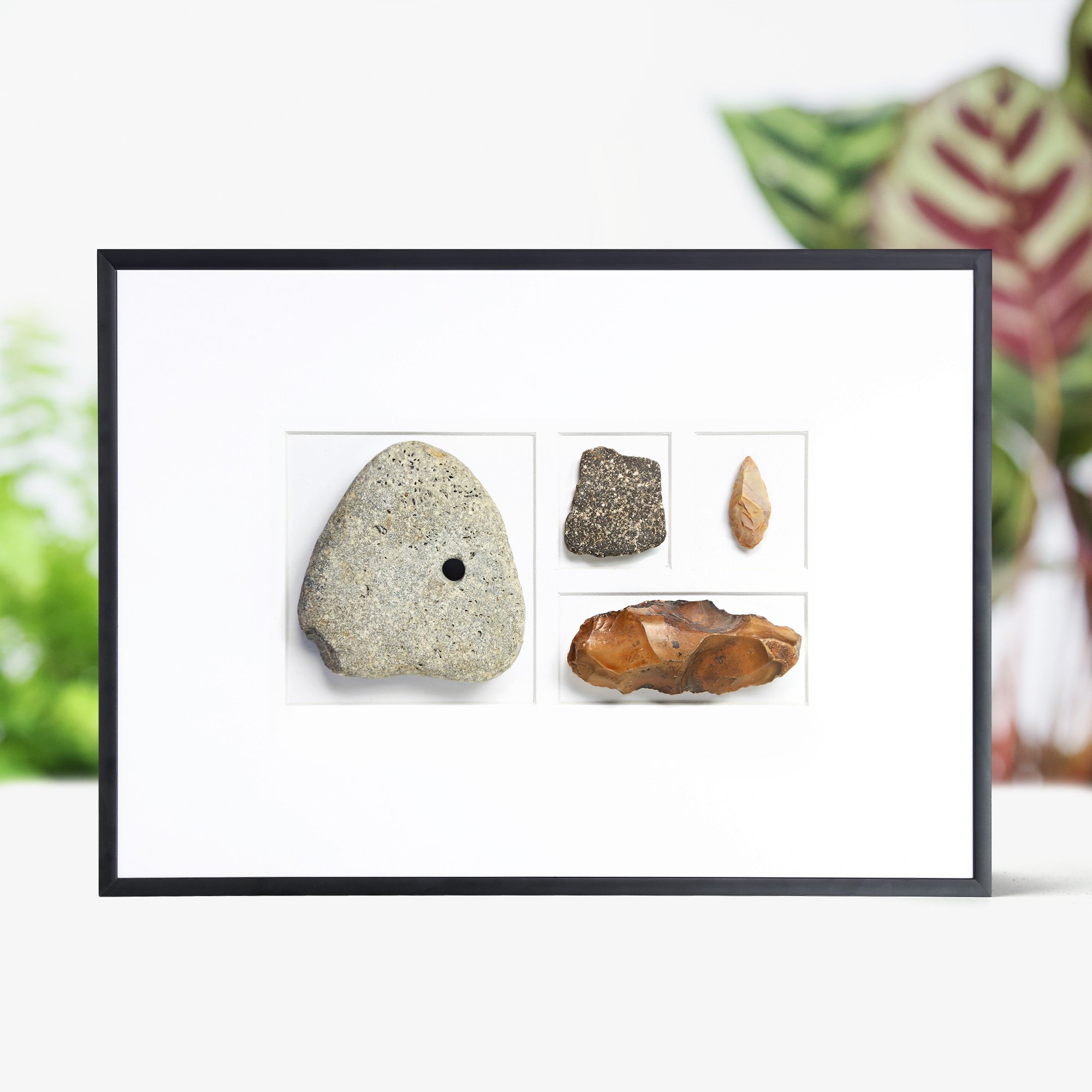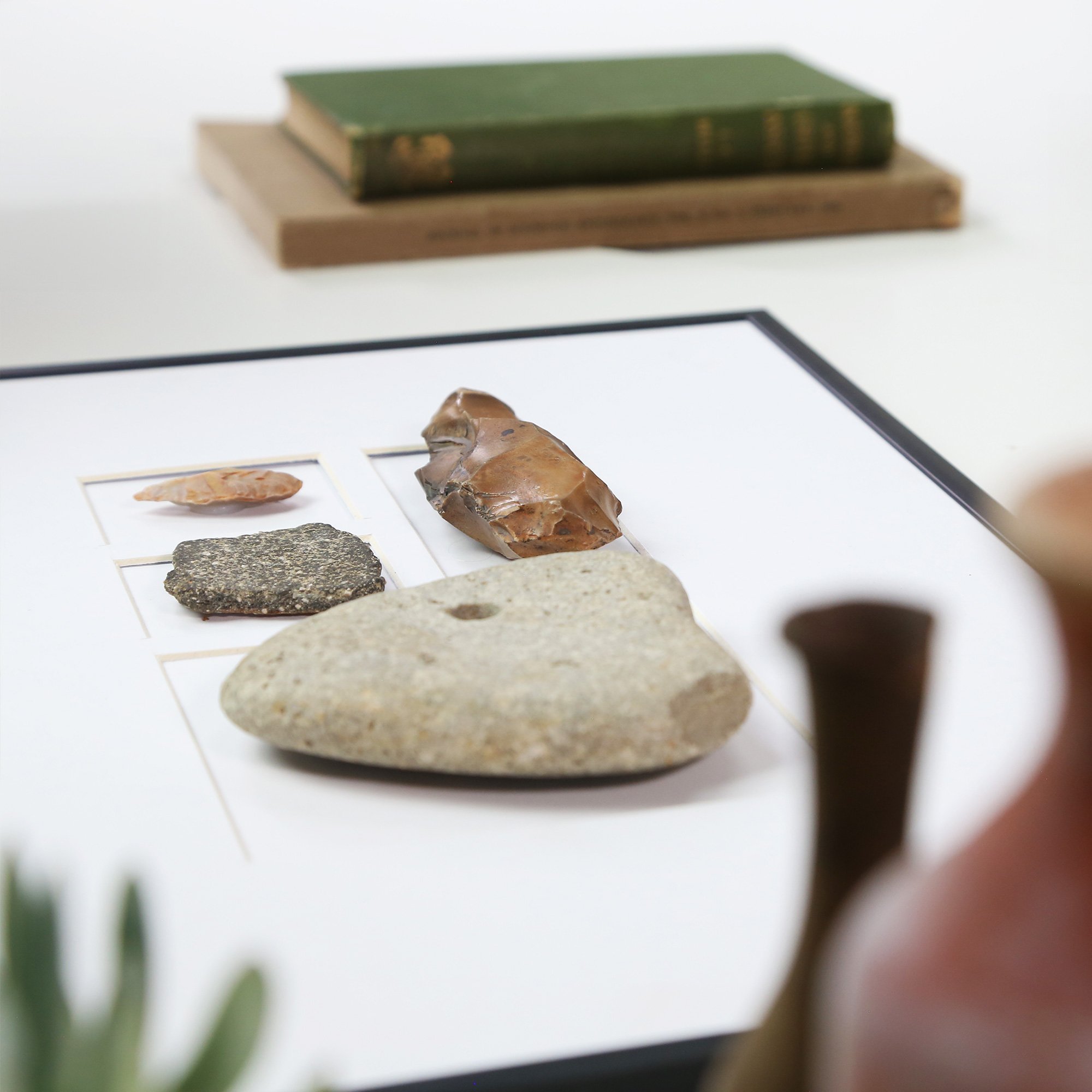Neolithic Collection
-
Age: 5th millennium BC - 3rd millennium BC (5000 - 3000 BC)
Period: Neolithic or New Stone Age (10,000 BC to 2000 BC)
Location: Europe
Materials: Flint, stone, clayIn Europe at this time, people primarily lived in small family groups or tribes. The era also marks the significant shift from a hunter-gatherer lifestyle to one centred on agriculture. Communities began practising farming, moving from food gathering to food production, and domesticating animals such as cattle, pigs, goats, and sheep, providing reliable sources of meat, milk, and labour.
The Neolithic era is characterised by the widespread use of ground or polished stone tools and weapons. Neolithic people exhibited remarkable skill in working with stone, fashioning it into tools with specific designs suited for tasks like grinding, chopping, and cutting.
Arrowhead & Scraper tool
One of the most important materials was flint, a sedimentary form of quartz, which was shaped through a process known as flintknapping. This intricate method required deep knowledge of how stone fractures and involved several precise steps. The process began by using a hammerstone or other hard object to strike the flint core and remove large flakes. Then, softer materials like antler, bone, or wood were used to remove smaller pieces to sharpen the tool’s edge. For larger tools, such as axes, the surface of the flint was often polished against sandstone or other abrasive materials to make the tools smoother and more durable.Fishing Tool
The stone of this Neolithic fishing weight is reasonably soft and would have been drilled by using a hard stick, flints, water and patience. Linen cords were attached using the hole and would perhaps have been used to weigh down lines that would have cultivated shellfish, much like we do today.Pottery
Prehistoric potters generally incorporated other materials such as shell or lithic (stone) fragments into their clay, to assist with releasing the water of plasticity and reduce cracking during firing, and to help stabilise the fabric of the pot. By 3300 BC, decorated pottery, also known as Impressed ware, began to appear. These bowls had decorations made by pressing various items into the clay before firing: reeds, sticks, bones and twisted cords were used, for example. -
This Neolithic Collection has been displayed and elegantly mounted in a museum quality frame, by our expert in-house team.
Frame: Satin finished acrylic
Mount: 300 GSM acid free card stock with a 2 mm bevelled edge matboard border
Display: Self standing frame or wall hanging bracket
Dimensions: 420 x 297mmThe picture shown is an example of the quality that you can expect to receive. Please be aware that, as these are natural products, they are subject to some variation.
-
We work closely with reputable suppliers all over the world to source high quality, genuine specimens. Each artefact comes with a certificate of authenticity documenting its provenance, including the age and location where it was discovered.




